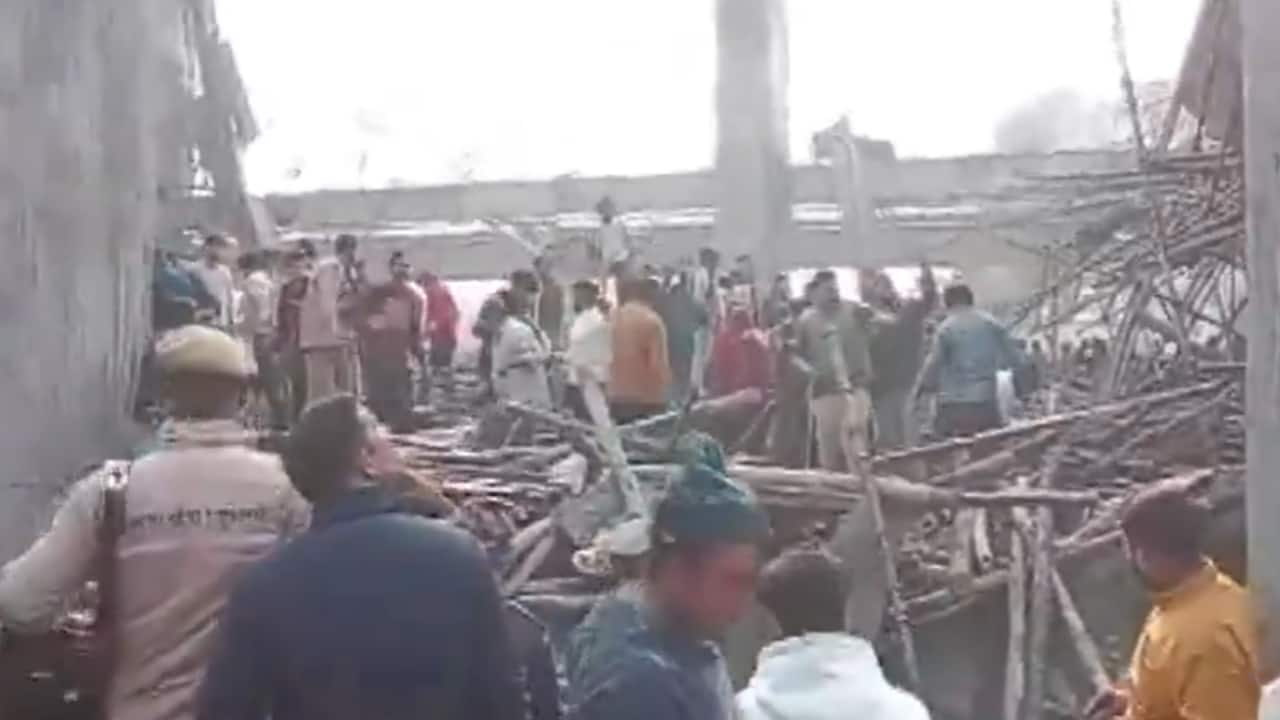 |
|
The catastrophic collapse of an under-construction roof slab at Kannauj railway station in Uttar Pradesh, India, on Saturday afternoon serves as a stark reminder of the critical importance of stringent safety regulations and thorough oversight in construction projects. The incident, which occurred around 2:39 pm, resulted in at least 23 people being rescued from the debris, while an unknown number remain trapped. Initial reports suggest that the collapse was due to the failure of the shuttering during beautification work at the new terminal. The sheer scale of the disaster, with multiple injuries ranging from minor to critical, underscores the urgent need for a comprehensive investigation into the causes of the accident. The immediate focus, however, remains on the rescue efforts, with the local administration, Railway Protection Force (RPF), and Government Railway Police (GRP) working tirelessly to locate and extract those still buried under the rubble. The speed and efficiency of the rescue operation will be crucial in determining the ultimate outcome and minimizing further loss of life.
The incident highlights a multitude of potential concerns, ranging from the quality of materials used in the construction to the adequacy of the structural design and the implementation of safety protocols on-site. The failure of the shuttering, a temporary structure used to support the concrete while it sets, raises serious questions about the competence of the contractors and the enforcement of building codes. Were proper inspections carried out? Were the materials used up to standard? Were workers adequately trained in safety procedures? These are just some of the critical questions that must be answered during the upcoming investigations. The fact that the collapse occurred during beautification work, which might be considered a less structurally critical phase of the project, further raises concerns about potential shortcuts or negligence.
Beyond the immediate concerns surrounding the rescue operation and the investigation, the Kannauj railway station collapse prompts broader discussions on infrastructure safety and accountability in India. The country's ambitious infrastructure development plans necessitate a parallel commitment to ensuring the highest safety standards. This incident underscores the need for more robust regulatory frameworks, stricter enforcement of building codes, and enhanced oversight mechanisms to prevent similar tragedies from occurring in the future. Increased transparency in the procurement and use of construction materials, coupled with rigorous training and certification programs for construction workers, are also critical elements in mitigating such risks. The long-term implications of this incident extend beyond the immediate victims; it demands a national conversation about ensuring the safety of those who build the nation’s infrastructure.
The incident's impact reaches far beyond the immediate physical damage and casualties. The psychological trauma suffered by the survivors, witnesses, and their families cannot be overlooked. The emotional toll of such a sudden and devastating event requires considerable support and resources for the affected individuals and communities. Furthermore, the economic consequences are significant. Not only are there direct costs associated with the rescue operation, medical care, and compensation for victims and their families, but the disruption to railway services and the potential damage to the reputation of the railway system will have lasting economic repercussions. The incident serves as a sobering reminder of the human cost associated with infrastructure projects and the need to prioritize safety above all else.
The investigation into the Kannauj railway station collapse will likely be extensive and multifaceted, encompassing structural engineers, materials experts, and safety inspectors. Transparency and accountability are paramount to ensure that lessons learned from this tragedy will lead to meaningful changes in construction practices and safety regulations throughout the country. The families of the victims deserve justice and closure, and the broader public deserves assurance that such incidents will be prevented in the future. The government's response to this incident will be a critical test of its commitment to ensuring the safety and well-being of its citizens. The outcome of this incident will shape future construction policies and potentially influence the trajectory of infrastructure development in India for years to come.
Source: Several feared trapped, 23 rescued after railway station roof slab collapses in UP's Kannauj
